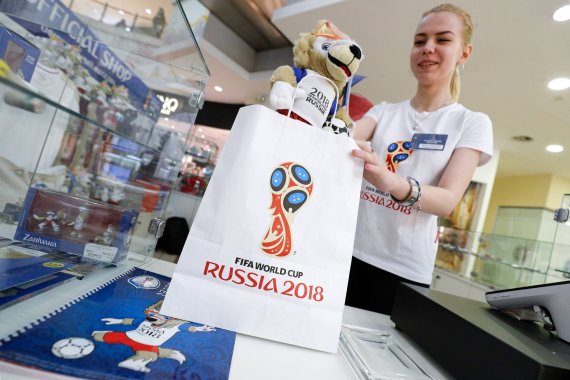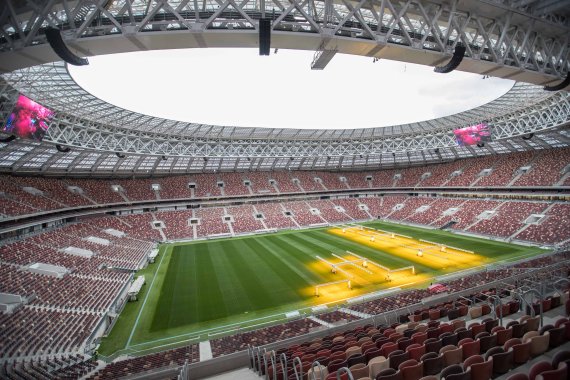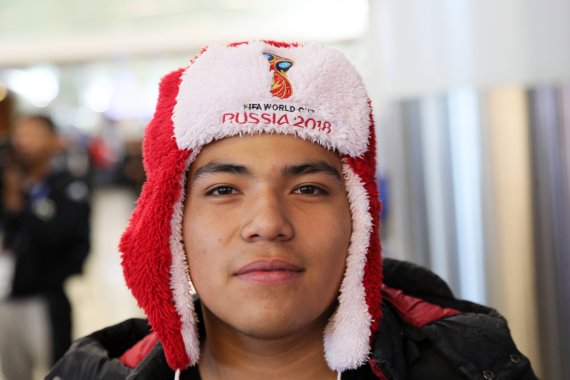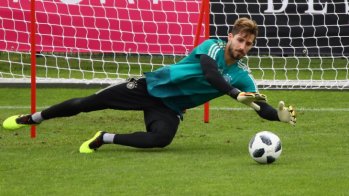
The World Cup in Russia isn’t just a highlight for soccer fans, it’s also a multi-billion dollar business. From match tickets, to merchandise, all the way up to sponsors and outfitters: everyone wants a piece of the pie. And leading the way is FIFA.
The football shoes of the German World Cup stars in pictures
At the 2014 World Cup in Brazil, FIFA generated revenues of 4.8 billion dollars (around 4 billion euros) as organizer. On the other hand, according to FIFA figures, expenses amounted to 2.2 billion dollars (1.7 billion euros). The marketing rights for the World Cup are exclusively held by FIFA. With them, the world federation also makes money on all jerseys or official plush mascots sold.
According to the New York Times, FIFA expects sales for the 2018 World Cup to total approximately 5.2 billion euros, ten percent more than expected. Approximately half of this amount comes from sold television rights.
According to “Spiegel” magazine, German public broadcasters ARD and ZDF are paying a record 218 million euros to broadcast the games from Russia. That’s another eight million more than the 2014 World Cup.
Another quarter of FIFA’s turnover comes from the sale of marketing rights, which was extremely sluggish for Russia, however. FIFA’s image has suffered badly from the corruption scandal, and some prominent partners (Emirates, Castrol, Continental, etc.) have already disassociated themselves.
Sponsor revenue for the 2015-2018 sponsorship cycle fell to $1.45 billion (2011-2014: $1.629 billion). What is striking is that, while European and North American companies dominated among the sponsors at the last World Cup, Asian brands are now jumping into the breach. Nearly 40 percent of World Cup sponsors are now Asian companies. Among the five official major sponsors of the 2018 World Cup, three are Chinese companies (Hisense, Vivo, and Mengniu).
Because the category of FIFA Premium Partners is well staffed – each Premium Partner pays roughly 32 million euros per year – so the sales targets for the World Cup are still considered almost achieved. Other sources of income are hospitality income and the sale of licensing rights. According to FIFA’s forecasts, this will generate 60 million dollars this year alone.
One of the licensees is Panini. The fees paid to FIFA for the 2010 and 2014 World Cups are said to have totaled one million dollars. There are no figures in circulation for the 2018 World Cups. However, with a price increase of 50 percent per bag compared to the last World Cup, the license fees are unlikely to have become any cheaper. If you want to fill your Panini album, you need 682 stickers and have to spend at least 130 euros. And FIFA makes money off of every single one of them, as well.
And then there are the ticket sales: At the 2014 World Cup these were the third largest item in the FIFA balance sheet, with revenue of 527 million dollars.

The national member associations aren’t the least to benefit from a prospering FIFA. The world federation is paying out record prize money of 400 million dollars (358 million dollars for the World Cup in 2014). The World Cup title alone will bring the winning association 38 million dollars – that’s three million more than the DFB won for the German triumph four years ago.
For the release period, FIFA also pays the players’ clubs 8,400 dollars (7200 euros) per day and kicker.
While the 2018 is likely to be a money-printing machine for FIFA, Russia will be in the red, at least in the medium term. For Russian president Vladimir Putin, the most expensive World Cup of all time is an object of global political prestige. Officially, the record sum of ten billion euros has been spent on stadiums and infrastructure, but unofficially it’s probably significantly more.
Investments in the preparatory years since 2013 contributed one percent to Russia’s gross domestic product (GDP). Russian plans also assume that tourism will generate additional revenue of two to three billion euros over the next five years.
The FIFA payments to the host might not even cover the high expenses to some extent: At the 2014 World Cup, the world federation distributed 453 million dollars to the Brazilian organizing committee. The Brazilian government received a “legacy” payment of 100 million dollars, for a cost of 15 billion dollars, which the South American country paid mainly in public money.
The teams’ outfitters will certainly benefit from the World Cup, especially Adidas:in 2014 alone, three million Adidas German jerseys were sold. In addition, the official Telstar 18 ball also comes from Adidas, and in 2014 the Herzogenaurach team sold 14 million copies of the former Brazuca ball.
“We are the clear global market leader in soccer, and will sponsor eleven teams at next year’s World Cup,” said CEO Kasper Rorsted. With Germany, Spain, and Argentina, Adidas had three favorites in its ranks but the new World Champion is the Nike Team France.
At least part of the money is going back into soccer: For the equipment contract with the German Football Association (DFB), which is valid until 2022, the company has to fork over an estimated 50 to 70 million euros per year, depending on success.
But other, unlicensed merchandising products are also pouring money into distributors’ pockets: in 2010, the vuvuzela made for some tremendous noise in the World Cup stadiums, on fan miles, and in beer gardens. In 2014, it was drumming on the combinho. Both copies have become bestsellers and come from the advertising agency Brandivision, which generates sales of roughly three million euros in non-World Cup years.
And in years of the World Cup? In 2010, the agency generated seven million euros, in 2014 20 million euros. And although China’s soccer team isn’t participating, its economy is considered to be a major beneficiary of the World Cup. Roughly 90 percent of the vuvuzelas in 2010 came from China - and flags, T-shirts, and caps are also produced there.

This year, the ushanka could replace the vuvuzela. The traditional Russian cap is being offered as a fan ushanka with national flags for all participating countries.
Brewers and restaurateurs are also reveling in the World Cup festivities with license-free live broadcasts in restaurants and bars. The circulation is relatively small: less than 5,000 spectators, no cover charge, and no sponsors.

 Sports BusinessSki Mountaineering Goes Olympic: What Milano-Cortina 2026 Means
Sports BusinessSki Mountaineering Goes Olympic: What Milano-Cortina 2026 Means
- ISPO awards
- Mountain sports
- Bike
- Design
- Retail
- Fitness
- Health
- ISPO Job Market
- ISPO Munich
- ISPO Shanghai
- Running
- Brands
- Sustainability
- Olympia
- OutDoor
- Promotion
- Sports Business
- ISPO Textrends
- Triathlon
- Water sports
- Winter sports
- eSports
- SportsTech
- OutDoor by ISPO
- Heroes
- Transformation
- Sport Fashion
- Urban Culture
- Challenges of a CEO
- Trade fairs
- Sports
- Find the Balance
- Product reviews
- Newsletter Exclusive Area
- Magazine



























